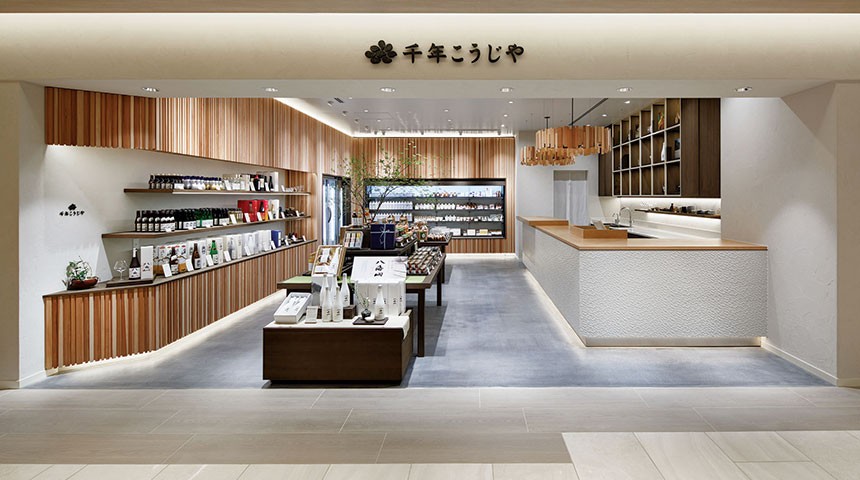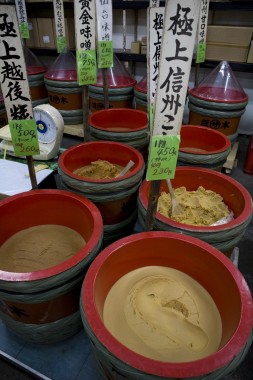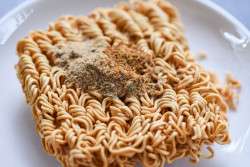
Fermented food is central to Japanese cuisine. The traditional pantry is based on many fermented products: soy sauce, miso, sake, mirin, vinegar, and amazake. These are all made using koji (Aspergillus oryzae), a type of mold that breaks down the carbohydrates in rice and soybeans into sugars that can be fermented. The resulting products will have amino acids, a form of delicious umami. These fermented ingredients are also rich with enzymes and bacteria that improve digestion. Here are tips for incorporating more fermented foods into your diet and eating for better health in the new year.
What to eat:

Miso is a paste that comes in many varieties, depending on what bean or grain is fermented. Traditional miso is made from soybeans, rice koji, and salt. A rice and soybean miso will be naturally sweet and can be used for making pastries. Kyushu is known for a barley miso that is studded with flecks of barley. Miso paste can also be used instead of salt in soups, salad dressings, or tomato-based dishes. Tomato and miso are both rich in umami.
On busy days I reach for a bottle of Marukome’s liquid miso or ekitai miso. Marukome shortens the word to ekimiso 液みそ. The miso is combined with dashi and could not be easier to use. Simply heat up in a small pot of water tofu and wakame seaweed. After it comes to a boil, turn off the heat, add the liquid miso and serve. Variations from there are unlimited — vegetables, seafood, tofu, or thin slices of pork belly. Cook until the ingredients are cooked and add the liquid miso.
Kinzanji miso 金山寺みそ is a chunky mix of soybeans, rice, barley, and vegetables and can come in a variety of flavors like yuzu or ginger. This is not used like traditional miso pastes, but as a condiment. It is best with crudité, cucumber, daikon, or carrot.

Mirin will add sweetness and a glaze in dishes like teriyaki. Two parts sake to one part each of soy sauce and mirin is the classic teriyaki recipe. In a pan, saute fish like salmon or sawara (Spanish mackerel) with a little oil. Add the teriyaki mixture and simmer until the sauce thickens. When shopping for mirin, look for hon-mirin 本みりん, which is authentic mirin that is naturally sweet. It can also be drunk as an aperitif. A small glass with ice and a splash of hon-mirin is a sweet start to the evening.
Naturally sweet amazake 甘酒 is a traditional fermented beverage that can be made from rice koji or from sake lees. Be sure to check before giving any to your children. Look for non-alcohol in katakana, ノンアルコール, or 0% alcohol. The texture can vary from a thin liquid to a thick or even chunky paste. Drink it straight for its natural probiotics or as a dessert served with fresh fruit.
Koji as an ingredient has become popular for its health benefits. Supermarkets now sell shio or shoyu koji, a thick slurry of koji mixed with salt or soy sauce. These can be substituted for salt or soy sauce in recipes. Quick pickles can be made by putting some vegetables like cabbage, carrot, cucumber, or daikon in a plastic bag and massaging the vegetables with some salt koji. The koji sauces can also be used for salad dressings, soups, or marinating proteins like chicken or fish before cooking. The kōji will soften the protein and creates glutamic acids, essentially umami.
Japanese pickles are another great way to incorporate fermented foods into your diet. Natto, fermented soybeans, is really good for you, too, if you are ok with the taste and texture. Here’s to your health in 2018!

Where to get it:

Sennen Kojiya 千年こうじや are shops operated by Hakkaisan Sake Brewery that specialize in a variety of fermented products. It is also my favorite brand of amazake. And, insider tip, the Nihonbashi branch has an eat-in counter where customers can do flights of Hakkaisan sake with sake-friendly small bites. Branches in Tokyo include Azabu-Juban (Minato-ku, Azabu-Juban 1-8-9), Ginza Six B2 (Chuo-ku, Ginza 6-10-1), and Nihonbashi Coredo Muromachi (Chuo-ku, Nihonbashi Muromachi 2-3-1, Nihonbashi Coredo Muromachi Bldg. 2, 1F.).
Nishiri is just across the street from Sennen Kojiya in Nihonbashi. This Kyoto pickle shop offers colorful pickle-centric set meals like pickle sushi or ochazuke. (Chuo-ku, Nihonbashi Muromachi 2-2-1, Coredo Muromachi Bldg. 1, 1F.) For all other fermented products, your local supermarket or depachika will have a wide variety.







